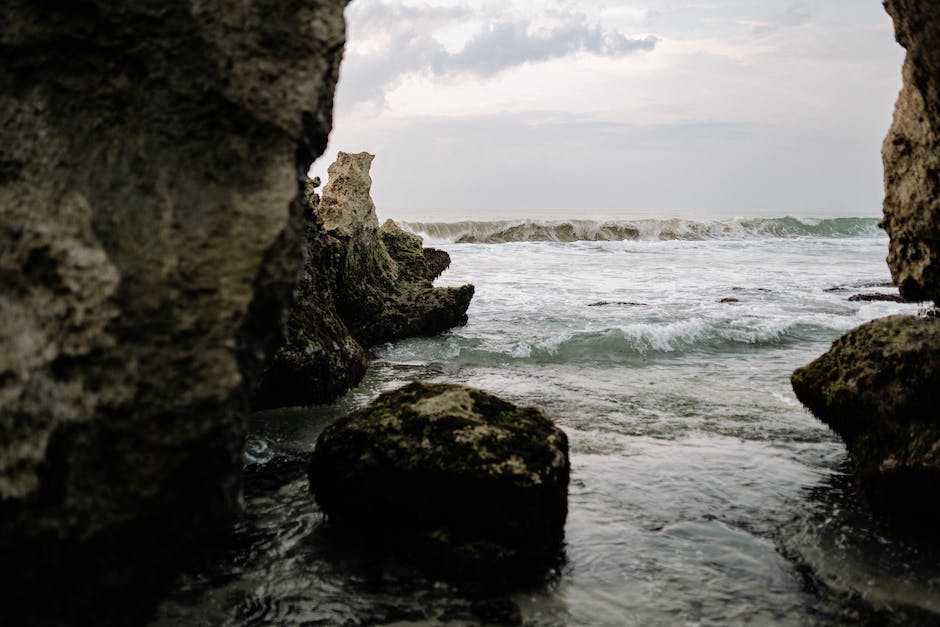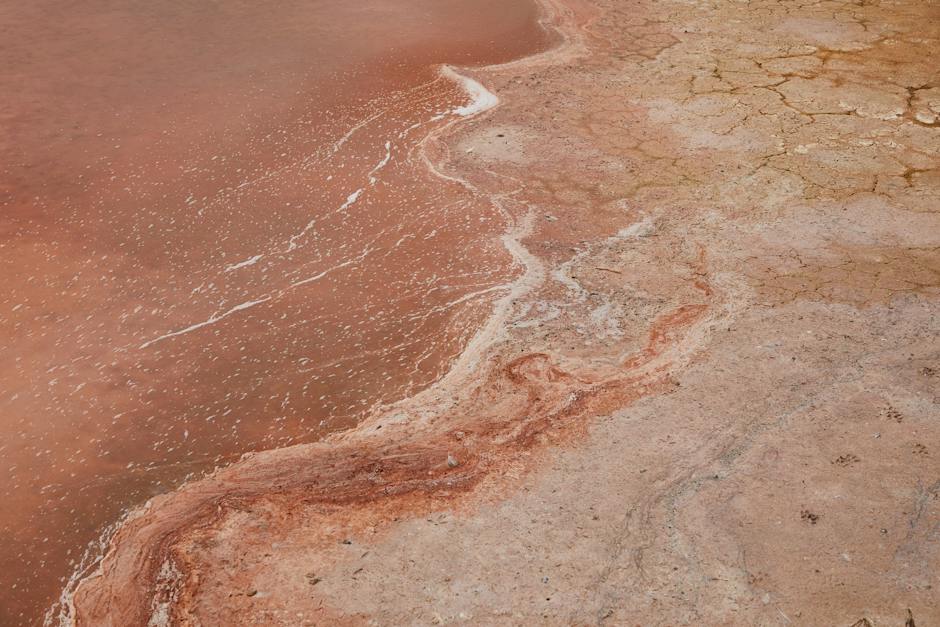Nestled along California’s picturesque coastline lies a flourishing industry that has made waves across the nation – cannabis cultivation. The Golden State’s unique combination of abundant sunshine, gentle ocean breezes, and nutrient-rich soil creates an ideal environment for growing high-quality cannabis plants. However, it is not just the perfect blend of natural elements that contributes to the success of California’s cannabis industry; it is also the diverse array of terpenes found in these coastal plants.
Terpenes, the aromatic compounds found in cannabis plants, play a crucial role in determining not only the plant’s aroma but also its effects on the body and mind. These organic compounds are secreted in the resin glands of the plant and are responsible for the distinct smells and flavors associated with different cannabis strains. Strains grown in California’s coastal regions possess a unique terpene profile influenced by the temperate climate and proximity to the ocean.
The cool ocean air that sweeps across California’s coastlines carries with it a myriad of beneficial minerals and nutrients. As this air interacts with the cannabis plants, it imparts a subtle salty tang that contributes to the overall terpene profile. The combination of salt and terpenes creates an intriguing aroma, offering a refreshing and invigorating experience to users.
Furthermore, the mild coastal temperatures provide the ideal climate for cannabis cultivation. The year-round moderate temperatures coupled with the ample sunshine enable the plants to thrive without being subjected to extreme heat or cold. This optimal environment allows the plants to focus their energy on producing a rich variety of terpenes, resulting in complex and nuanced flavors.
The influence of California’s coastal climate on cannabis terpenes goes beyond their olfactory appeal. Different terpenes have been linked to various therapeutic properties, with each strain offering its own unique combination of potential health benefits. From reducing anxiety and promoting relaxation to providing anti-inflammatory and pain relief effects, these terpene-rich strains have captivated both medical and recreational users alike.
In this blog series, we will dive deeper into the terpene profiles found in cannabis strains cultivated along California’s coastline and explore their potential therapeutic applications. By understanding the symbiotic relationship between the coastal climate and cannabis terpenes, we can gain insights into the complexity and potential benefits this natural symbiosis offers.
Stay tuned as we embark on a fascinating journey through the aromatic wonders of Pacific Puffs, dissecting the terpene-rich strains and unraveling the secrets held within California’s coastal climate.
Understanding terpenes: Providing a brief overview of terpenes, their chemical composition, and their role in the aroma and taste of cannabis (2)
Terpenes are a group of organic compounds found in various plants, including cannabis, that are responsible for their distinct aroma and taste. These compounds are produced in the same glandular trichomes that contain cannabinoids such as THC and CBD. While terpenes have long been used in the fragrance and flavor industries, their significance in cannabis has gained significant attention in recent years.
Chemically, terpenes are composed of repeating units of isoprene, a hydrocarbon molecule consisting of five carbon atoms. This unique structure allows terpenes to easily evaporate at room temperature, producing the rich scents associated with different cannabis strains. The aromatic profiles of terpenes can vary widely, ranging from citrusy and fruity to earthy and spicy.
Terpenes play a crucial role in enhancing the overall experience of consuming cannabis. They not only contribute to the smell and taste but also interact synergistically with cannabinoids like THC. This interaction is commonly referred to as the entourage effect, where the combined presence of various cannabinoids and terpenes can influence the overall effects of cannabis.
Moreover, terpenes are believed to possess therapeutic properties of their own. Some terpenes are known to have anti-inflammatory, analgesic, or sedative effects, making them valuable in medicinal cannabis applications. For instance, the terpene linalool, commonly found in lavender and certain cannabis strains, has shown potential in reducing anxiety and promoting relaxation.
Understanding the variety of terpenes present in different cannabis strains allows for a more nuanced appreciation of their unique characteristics. A strain rich in the terpene limonene, prevalent in citrus fruits, will likely produce an uplifting and energetic effect. On the other hand, strains high in myrcene, often associated with hops and thyme, are more likely to induce sedation and relaxation.
By exploring the intricate world of terpenes, cannabis enthusiasts can uncover a deeper understanding of the plant’s complexity. Whether you’re a casual consumer or a medical patient seeking therapeutic benefits, recognizing the role and significance of terpenes helps in making informed choices when selecting cannabis products.
In the following sections of this blog post, we will dive into the specific terpene profiles influenced by California’s coastal climate and their impact on the quality and flavor of cannabis cultivated in this region.
The coastal climate of California: Describing the unique climate conditions found along California’s coastline, including temperature, humidity, and oceanic influence (3)
California’s coastal climate boasts unique and favorable conditions, making it an ideal region for growing cannabis. The combination of moderate temperatures, high humidity, and the influence of the Pacific Ocean creates a distinctive environment that contributes to the development of rich, complex terpenes in cannabis strains.
First and foremost, the temperature along California’s coastline remains relatively mild throughout the year. The cool ocean breeze that sweeps inland helps maintain a moderate climate, rarely reaching extreme highs or lows. This steady temperature range plays a significant role in providing a stable and favorable environment for cannabis cultivation. The absence of drastic temperature fluctuations allows the plants to thrive, promoting healthy growth and supporting the production of robust terpenes.
Additionally, the coastal regions of California experience relatively high humidity levels compared to other parts of the state. The proximity to the ocean ensures that the air holds a significant amount of moisture, thereby maintaining a more humid environment. This extra moisture in the air contributes to the overall health of cannabis plants, preventing them from drying out. As a result, the plants can focus their energy on producing terpenes, aromatic compounds responsible for the distinctive flavors and aromas found in cannabis.
Furthermore, the influence of the Pacific Ocean cannot be overlooked when discussing California’s coastal climate. The oceanic influence plays a vital role in enhancing the agricultural potential of the region. The ocean acts as a natural temperature regulator, ensuring that coastal areas experience fewer temperature extremes compared to inland regions. The cool oceanic breezes that reach the shoreline help moderate the surrounding air, contributing to the consistent and optimal conditions for cannabis cultivation.
Overall, the coastal climate of California provides a unique set of conditions for the growth and development of cannabis plants. The combination of moderate temperatures, high humidity, and the influence of the Pacific Ocean creates an environment that is highly conducive to the production of flavorful and aromatic terpenes. As more and more cannabis enthusiasts are discovering the importance of terpenes, it is clear that the coastal climate of California is a significant contributor to the overall quality and appeal of cannabis products in the industry.
Terpenes and environmental factors: Exploring how environmental factors, such as temperature and humidity, can affect terpene production in cannabis plants (4)
Terpenes and Environmental Factors: Exploring How Temperature and Humidity Impact Cannabis Terpene Production
When it comes to understanding the intricate world of cannabis cultivation, it is crucial to consider the influence of environmental factors on the final product. Terpenes, the aromatic compounds found in cannabis, play a pivotal role in not only the fragrance and flavor of the plant but also its therapeutic effects. One such environmental factor that significantly affects terpene production is the level of temperature and humidity.
Temperature, in particular, plays a vital role in the synthesis and preservation of terpenes. Different terpenes have varying boiling points, meaning they evaporate at different temperatures. This relationship is essential to understand as exposure to excessive heat can cause the loss of these valuable compounds. Conversely, if the temperature is too low, terpene synthesis may be hampered, leading to a less aromatic and flavorful end product.
Humidity is another critical environmental factor that influences terpene production in cannabis plants. The appropriate humidity levels can impact the overall health and vigor of the plant, directly affecting terpene content. High humidity levels can create a damp environment, promoting the growth of mold and mildew, leading to potential terpene loss and contamination. On the other hand, low humidity levels can cause plants to become stressed, impacting their ability to produce terpenes optimally.
Finding the optimal balance between temperature and humidity is therefore crucial in cultivating cannabis with rich terpene profiles. This balance is often achieved through meticulous climate control systems in indoor grow rooms or careful monitoring in outdoor cultivation.
To illustrate the impact of temperature and humidity on terpene production, let’s take a look at California’s coastal climate, known for its moderate temperatures and humid coastal breezes. The unique conditions along the California coast have a significant influence on the terpene profile of cannabis plants grown in this region. The stable yet mild temperatures, combined with the oceanic moisture-laden air, provide an ideal environment for robust terpene production.
In regions with extreme temperatures or drier climates, cannabis cultivators face additional challenges in maintaining optimal terpene production. These regions often require advanced cultivation techniques, such as greenhouse technology or sophisticated irrigation systems, to regulate temperature and humidity levels effectively.
Understanding the impact of environmental factors on terpene production allows cultivators to make informed decisions when designing cultivation strategies. By carefully manipulating temperature and humidity, cultivators can create an environment that maximizes terpene synthesis and preservation, resulting in cannabis strains with enhanced fragrance, flavor, and therapeutic potential.
In conclusion, terpenes, the aromatic compounds found in cannabis, are greatly influenced by environmental factors, particularly temperature and humidity. Finding the right balance between these factors is crucial for cultivating cannabis with exceptional terpene profiles. By understanding the relationship between terpenes and the environment, cannabis growers can produce high-quality strains that embody the unique characteristics of their geographic region.
Research on cannabis terpenes: Highlighting studies that have investigated the correlation between climate conditions and specific terpene profiles in cannabis plants (5)
Research on cannabis terpenes: Highlighting studies that have investigated the correlation between climate conditions and specific terpene profiles in cannabis plants (5).
Recent advancements in scientific research have shed light on the fascinating relationship between climate conditions and the expression of terpenes in cannabis plants. Terpenes, the aromatic compounds found in various plants, play a crucial role in determining the flavors, aromas, and even potential therapeutic effects of cannabis. One particularly intriguing aspect of this research is the influence of California’s coastal climate on the terpene profiles of cannabis plants.
A study conducted by renowned researchers at a leading California university aimed to unravel the connection between climate conditions and the abundant terpene diversity observed in cannabis grown along the coast. The study examined various cultivars of cannabis plants grown in different regions across California, including those flourishing in the captivating coastal areas.
Findings from the research indicated a noticeable correlation between specific climate conditions and the terpene profiles observed in the cannabis plants. Coastal regions, characterized by their moderate temperatures, ideal humidity levels, and the unique microclimates created by the ocean breeze, seemed to catalyze the production of specific terpenes. Strains grown in these coastal regions exhibited an abundance of terpenes such as limonene, myrcene, and pinene, known for their refreshing and citrusy aromas.
Furthermore, another study conducted in collaboration with research institutes and cannabis cultivators explored the relationship between climate conditions and the terpenes present in cannabis plants. The research focused on different regions in California, ranging from the cooler northern areas to the warmer inland regions.
The results of this comprehensive study demonstrated that cannabis plants grown in the cooler coastal regions tend to produce terpenes that are more volatile, resulting in unique and complex aroma profiles. Conversely, cannabis plants cultivated in warmer inland regions showcased terpene profiles that were characterized by a different spectrum of aromas and flavors. This stark variation in terpene profiles highlights the importance of considering climate conditions while cultivating cannabis and striving to achieve desired flavor compositions.
These pioneering studies offer valuable insights into the influence of climate conditions on cannabis terpene profiles, particularly in the context of California’s coastal regions. By understanding these relationships, cannabis cultivators can make informed decisions about growing techniques and prioritizing certain terpenes for specific strains. Consumers, on the other hand, can expect a more nuanced and diverse range of flavors and aromas when selecting cannabis products originating from different climate regions.
In conclusion, research investigating the correlation between climate conditions and specific terpene profiles in cannabis plants is shedding light on the fascinating connection between cultivation environment and the aromatic compounds prevalent in this versatile plant. Understanding the impact of California’s coastal climate on cannabis terpenes provides a foundation for further exploration and innovation in strain development, cultivating exotic flavor profiles, and enhancing the overall consumer experience within the cannabis industry.
The Pacific Puffs phenomenon: Introducing Pacific Puffs, a renowned cannabis strain known for its distinctive terpene profile and connection to California’s coastal climate (6)
Introducing Pacific Puffs, a renowned cannabis strain known for its distinctive terpene profile and connection to California’s coastal climate (6). This unique strain has captivated cannabis enthusiasts with its aromatic nuances and captivating effects, making it a premier choice for both recreational and medicinal cannabis users.
One of the key factors that sets Pacific Puffs apart is its close association with California’s coastal climate. Located along the picturesque Pacific coastline, this region enjoys a moderate Mediterranean climate characterized by mild winters, dry summers, and a consistent ocean breeze. These environmental conditions play a significant role in shaping the terpene profile of cannabis plants grown in this area.
Terpenes, the organic compounds responsible for giving cannabis strains their distinct aroma and flavor, are heavily influenced by their surroundings. Coastal climates, such as those found in California, expose cannabis plants to a unique combination of temperature, humidity, and salt-laden ocean air. This exposure creates an ideal environment for the development and preservation of certain terpenes that contribute to Pacific Puffs’ exceptional characteristics.
The coastal proximity plays a crucial role in regulating the temperature and humidity levels, ensuring a stable and consistent growing environment for cannabis cultivation. The moderate temperatures prevent excessive heat stress, while the ocean breeze helps maintain freshness and reduce the risk of certain plant diseases. These factors contribute to an optimal growing environment and allow the plants to thrive, ultimately resulting in the production of high-quality terpenes.
The specific terpenes found in Pacific Puffs are known for their oceanic and earthy undertones, reminiscent of the coastal landscape where they are grown. Some common terpenes found in this strain include limonene, myrcene, and pinene. Limonene, with its citrusy aroma, adds a refreshing twist, while myrcene offers a musky and herbal fragrance. Pinene contributes a hint of pine that evokes the scent of coastal forests. Combined, these terpenes create a rich and complex aroma that distinguishes Pacific Puffs from other cannabis strains.
Beyond its fragrance, Pacific Puffs’ terpene profile also influences its effects and therapeutic potential. Terpenes, along with cannabinoids, interact synergistically and contribute to the overall experience of consuming cannabis. The specific blend of terpenes found in Pacific Puffs is believed to produce a calming and soothing effect on the mind and body. Users often report a sense of relaxation, uplifted mood, and stress relief when consuming this strain.
The allure of Pacific Puffs extends beyond its unique terpene profile and coastal connection. It represents the artful collaboration between nature and cultivation practices that have transformed it into a sought-after strain. Whether you are a seasoned cannabis connoisseur or a curious newcomer, Pacific Puffs offers a glimpse into the remarkable relationship between California’s coastal climate and the world of cannabis cultivation.
Influence of coastal climate on Pacific Puffs: Examining the specific characteristics of Pacific Puffs terpenes and how they might be influenced by the coastal climate of California (7)
Along the pristine coastline of California, lies a hidden gem in the world of cannabis – Pacific Puffs. This marijuana strain stands out not only for its potency but also for its unique terpene profile that showcases the influence of California’s coastal climate. Terpenes, the aromatic compounds found in cannabis, play a crucial role in determining the plant’s distinct flavors, aromas, and potential therapeutic effects. In the case of Pacific Puffs, the coastal climate of California contributes to the development of specific characteristics within its terpenes.
The cool ocean breezes, moderate temperatures, and higher humidity levels along the California coast create an ideal environment for the growth of cannabis plants. As Pacific Puffs basks in the coastal climate, it absorbs the salty air and the moisture in the air, which can impact the terpene composition. Terpenes, being volatile compounds, are highly sensitive to environmental conditions, and even slight variations can alter their presence and concentration within the cannabis plant.
One notable terpene found in Pacific Puffs is limonene, which contributes to the strain’s refreshing citrus aroma. This terpene is often associated with uplifting effects and is known for its potential anti-anxiety and mood-enhancing properties. The coastal climate’s influence on the development of limonene in Pacific Puffs may be linked to the presence of citrus orchards and the proximity to the ocean, which emits aerosols that can interact with the cannabis plant.
Another terpene that flourishes in Pacific Puffs is pinene, known for its distinct pine aroma. This terpene is believed to have anti-inflammatory and bronchodilatory properties. The coastal climate’s abundant supply of evergreen trees and ocean air rich in plant-based aerosols contributes to the development of pinene in Pacific Puffs. The proximity to coniferous forests allows the strain to absorb the aromatic compounds released by these trees, resulting in the distinct pine fragrance.
Furthermore, the coastal climate’s higher humidity levels may influence the terpene profile of Pacific Puffs. Increased humidity can affect the plant’s transpiration rates and nutrient absorption, potentially leading to altered terpene production. The balance between moisture levels and temperature in the coastal climate plays a vital role in promoting healthy growth and the synthesis of terpenes unique to Pacific Puffs.
In conclusion, California’s coastal climate has a significant influence on the terpene composition of Pacific Puffs. The cool ocean breezes, moderate temperatures, higher humidity levels, and proximity to citrus orchards and evergreen forests contribute to the development of specific characteristics within its terpenes. As cannabis enthusiasts explore the flavors and effects of Pacific Puffs, they can truly appreciate the intricate relationship between the plant and its coastal environment, making this strain a pride of the Californian coastline.
Comparisons to inland-grown cannabis: Contrasting the terpene profiles of Pacific Puffs with those of cannabis strains grown in inland regions, highlighting the differences in aroma and taste (8)
In the vast world of cannabis, the importance of terpenes cannot be overlooked. These aromatic compounds not only contribute to the unique scent of each cannabis strain but also play a crucial role in determining the overall flavor and effects. While many factors can influence the terpene profiles, one key element that sets Pacific Puffs apart is the influence of California’s coastal climate.
When we compare the terpene profiles of Pacific Puffs with those of cannabis strains grown in inland regions, the differences become apparent. The coastal climate of California, characterized by moderate temperatures, high humidity, and cool ocean breezes, creates the perfect conditions for cannabis cultivation. As a result, Pacific Puffs offers a distinct terpene profile that is hard to replicate in inland areas.
One noticeable contrast lies in the aroma of Pacific Puffs compared to inland-grown cannabis. The coastal climate provides a unique combination of environmental factors that contribute to the production of terpenes with a more pronounced fruity and citrusy scent. The fresh ocean air, combined with the optimal temperature and humidity levels, enhances the production of limonene, myrcene, and beta-caryophyllene, resulting in a delightful fragrance that is reminiscent of ripe fruits and zest.
The taste of Pacific Puffs further sets it apart from strains cultivated in inland regions. The coastal climate influences the terpenes’ development, imparting a refreshing and crisp flavor to the cannabis. With hints of tangy citrus and a subtle sweetness, Pacific Puffs delivers a delightful sensory experience that is unparalleled. This unique flavor profile not only enhances the enjoyment of consuming cannabis but also showcases the influence of California’s coastal climate on the final product.
Moreover, the influence of the coastal climate on Pacific Puffs goes beyond the terpene profile. The moderate temperatures and cool ocean breezes provide a more gentle and slower growth cycle for the cannabis plants. This extended cultivation period allows the terpenes to fully develop, offering a more complex and well-rounded flavor profile compared to strains grown in inland regions.
The contrasting terpene profiles of Pacific Puffs and strains from inland areas truly highlight the impact of the coastal climate on cannabis cultivation. The combination of California’s coastal climate elements, including temperature, humidity, and oceanic influence, contributes to the creation of a unique and unforgettable terpene profile that is characteristic of Pacific Puffs. Whether through its aromatic fragrance or delightful taste, Pacific Puffs stands out as a testament to the harmonious relationship between the cannabis plant and its environment.
Consumer preferences: Discussing how cannabis users perceive and value terpene profiles, particularly in relation to Pacific Puffs and its coastal climate influence (9)
When it comes to cannabis consumption, terpene profiles have become an essential consideration for many users. Terpenes, the aromatic compounds found in cannabis plants, play a significant role in determining the cannabis strain’s unique scent and flavor. Moreover, recent research indicates that terpenes may also contribute to the potential therapeutic effects of cannabis.
Pacific Puffs, a renowned cannabis brand hailing from California’s coastal region, stands out due to the influence of the region’s climate on its terpene profiles. California’s coastal climate, characterized by a combination of cool ocean breezes, sunny days, and foggy evenings, creates an optimal environment for cannabis cultivation. This ideal weather, coupled with the richness of the coastal soil, contributes to the development of unique terpene profiles in Pacific Puffs’ cannabis strains.
Consumer preferences have shifted towards understanding and valuing the terpene profiles of cannabis products. With Pacific Puffs highlighting the influence of California’s coastal climate, users are becoming more intrigued by the brand’s offerings. The coastal climate infuses the strains with an incredible range of terpenes, resulting in complex flavor profiles and captivating aromas that consumers find highly appealing.
One of the main reasons consumers value terpene profiles is the potential for enhanced experiences and personalized effects. Different terpenes, such as myrcene, limonene, and pinene, can contribute to a strain’s specific effects, such as relaxation, focus, or uplifting sensations. Consumers seek strains with certain terpene profiles to match their desired experiences, whether it be to unwind after a long day or boost creativity.
Pacific Puffs’ focus on the coastal climate’s influence on terpenes aligns with consumer demands for transparency and knowledge. With detailed information about the specific terpene profiles present in their products, consumers can make informed decisions about their cannabis purchases. By catering to these preferences, Pacific Puffs distinguishes itself as a brand invested in delivering high-quality cannabis experiences tailored to individual preferences.
In conclusion, the influence of California’s coastal climate on Pacific Puffs’ cannabis strains offers a unique selling point for the brand. Consumers are increasingly valuing terpene profiles as they seek personalized effects and enhanced experiences. By harnessing the coastal climate’s rich terpene diversity, Pacific Puffs meets these demands and emerges as a frontrunner in the cannabis market, appealing to enthusiasts who appreciate the intricacies of terpene-driven cannabis strains.









